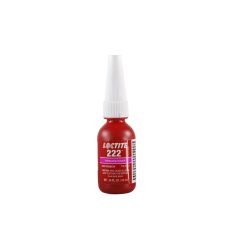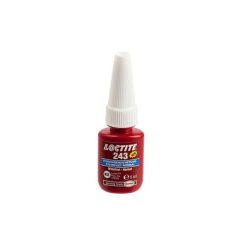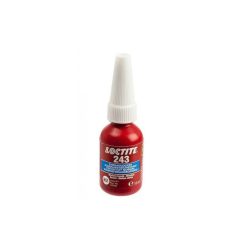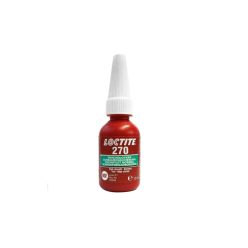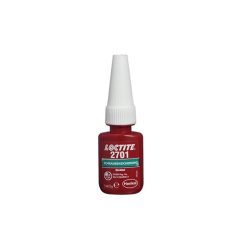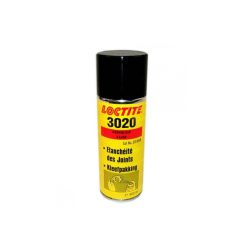The Loctite Products category covers industrial-grade threadlockers, retaining and sealing compounds, instant adhesives and accessories for automotive use. The right choice prevents loosening, leaks and corrosion. Always check strength (low/medium/high), temperature rating, service disassembly needs, and surface preparation including cleaner and activator compatibility.
Net price: 11 €
Brief summary & key benefits
Loctite Products secure fasteners, shafts and seals in workshops and race paddocks alike. Anaerobic threadlockers cure in the absence of oxygen to stop vibration-induced loosening; retaining compounds fill clearance between shafts and hubs; liquid gasket makers seal flanges against oils and coolants. Benefits include consistent torque retention, corrosion protection and broad temperature capability. Selecting by strength, viscosity, clearance and substrate condition ensures dependable results.
Technical Basics
Anaerobics cure on metal surfaces once air is excluded. Typical handling strength appears in 10–30 minutes with full cure in 24 hours. Strength classes: low (precision screws), medium (serviceable joints) and high (permanent). Well-known grades include 222 (low), 243 (medium, oil-tolerant), 270 (high) and 290 (wicking). Oil-tolerant additives maintain adhesion on mildly contaminated parts, though clean, degreased surfaces deliver the best performance.
Retaining grades such as 641/648/638 fill 0.05–0.25 mm clearances to stabilise worn fits with high shear strength. Flange sealants (e.g., 518/574) create solvent-free gaskets on rigid faces, resisting oil, fuel and glycol. Pipe thread sealants (e.g., 542/577) provide gas-tight seals on tapered or parallel threads, preventing micro-leaks.
Surface prep starts with solvent cleaning and oxide removal. On passive metals (stainless, plated parts) cure can be slower; use a suitable activator to speed polymerisation. Anaerobics do not cure on porous plastics or in large exposed gaps—choose CA, hybrid or epoxy technologies for those cases.
Temperature and chemical resistance: typical service −55 to +150 °C, with certain grades rated higher. Resistance to oil, fuels and coolants is excellent. For disassembly of high-strength joints, localised heat (150–250 °C) helps break the bond.
Selection Criteria
1) Function: choose threadlocker for screws, retaining compound for shaft–hub fits, flange sealant for rigid faces, pipe sealant for threads, or CA/structural adhesive for quick bonding.
2) Strength vs serviceability: use medium strength (e.g., 243) where routine service is needed; high strength (270/2701) for permanent locking; low strength (222) for small threads; 290 for post-assembly wicking.
3) Clearance & surfaces: larger gaps call for higher viscosity or a retaining grade (638/648). For mildly oily parts, pick oil-tolerant formulas (243/638). Passive metals benefit from an activator; plastics require CA or hybrid chemistries.
4) Temperature & chemicals: near engines and driveline parts prioritise heat and fluid resistance. For fuel-contact areas, ensure the sealant is specifically rated for hydrocarbons.
5) Packaging & dosing: small bottles suit workshop use; for production, larger packs or precision applicators speed consistent dispensing.
Installation & Maintenance
Clean and dry mating parts; shake the bottle; apply a small amount around the thread circumference. Tighten to the manufacturer’s torque and avoid loading until handling strength is reached. For retainers, wet the entire fit; for flanges, lay a thin continuous bead; on pipe threads, keep the first thread free to avoid contamination of the system.
Disassembly: for medium strength joints, hand tools suffice; for high strength, apply targeted heat and use appropriate leverage. After removal, mechanically clean residues and flush with solvent. Wipe off squeeze-out to improve looks and minimise corrosion traps.
Safety: these are solvent-borne/acrylate systems—wear gloves and eye protection and ensure adequate ventilation. Keep away from ignition sources and out of reach of children. Store in a cool, dry place.
FAQ
Q: Which threadlocker suits brake caliper bolts?
A: Typically a medium-strength grade (e.g., 243) so the joint stays serviceable yet secure—follow the vehicle manual if it specifies otherwise.
Q: Can Loctite be used on slightly oily parts?
A: Oil-tolerant grades (243/638) cope with light contamination, but thorough degreasing always improves bond reliability.
Q: 638 vs 648 — what’s the difference?
A: Both are retaining compounds; 638 targets larger gaps and very high strength, while 648 focuses on elevated temperature resistance.
Q: When do I need an activator?
A: On passive metals (e.g., stainless), at low temperatures or with larger clearances to accelerate cure and reach full strength.
Q: How can I release a high-strength threadlocker?
A: Apply localised heat (150–250 °C), then use appropriate tools. Inspect and clean threads before reassembly.

